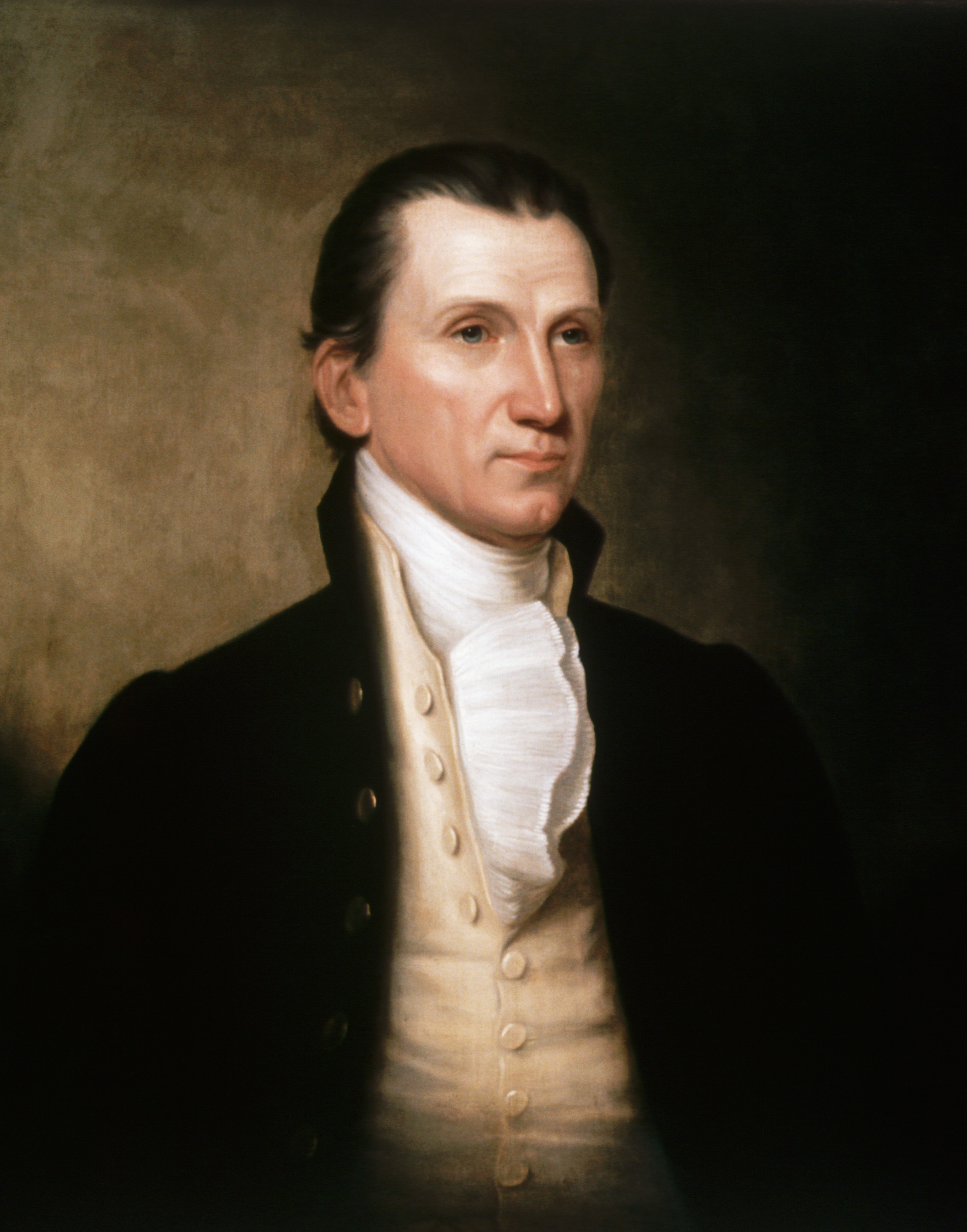The fifth president of the United States, James Monroe is known for his “Monroe Doctrine,” disallowing further European colonization in the Americas.

Born on April 28, 1758, in Westmoreland County, Virginia, James Monroe fought under George Washington and studied law with Thomas Jefferson. He was elected the fifth president of the United States in 1817. He is remembered for the Monroe Doctrine, as well as for expanding U.S territory via the acquisition of Florida from Spain. Monroe, who died in 1831, was the last of the Founding Fathers.
Early Life
James Monroe was the last American president of the “Virginia Dynasty,” so named because four of the first five presidents were from Virginia. He was born on April 28, 1758, in Westmoreland County, Virginia, to Spence Monroe and Elizabeth Jones Monroe. Spence was a moderately prosperous planter and carpenter whose family emigrated from Scotland in the mid-1600s. First tutored by his mother at home, James attended Campbelltown Academy between 1769 and 1774, and was an excellent student.
As the eldest of several children, James was expected to inherit his father’s estate, but the events of 1774 turned his life in new directions. His father died that year, and young James soon enrolled at Virginia’s College of William & Mary with intentions of studying law, but dropped out just months later to fight in the American Revolution. His first act of rebellion was to join several classmates and raid the arsenal of the British royal governor, escaping with weapons and supplies that they turned over to the Virginia militia. He soon joined the Continental Army, becoming an officer in 1776, and was part of General George Washington’s army at the Battle of Trenton, where he was severely wounded.
Political Career Beginnings
After the war, James Monroe studied law under the tutorage of Thomas Jefferson, beginning a life-long personal and professional relationship. In 1782, he was elected to the Virginia House of Delegates, and from 1783 to 1786, he served in the Continental Congress, then meeting in New York. While there, he met and courted Elizabeth Kortright, the daughter of a prosperous New York merchant. The couple married on February 16, 1786, and moved to Fredericksburg, Virginia. Monroe proved to not be as successful a farmer as his father and, in time, sold his property to practice law and enter politics.
After the 1787 Federal Convention, Monroe initially joined the anti-Federalists in opposing ratification of the new constitution because it lacked a bill of rights. However, he and several key figures withheld their reservations and vowed to push for changes after the new government was established. Virginia narrowly ratified the Constitution, paving the way for a new government.
In 1790, James Monroe ran for a House seat but was defeated by James Madison. Monroe was quickly elected by the Virginia legislature as a United States senator, and soon joined the Democratic-Republican faction led by Jefferson and Madison opposing the Federalist policies of Vice President John Adams and Secretary of the Treasury Alexander Hamilton. Within a year of his election, Monroe rose to become his party’s leader in the Senate.
U.S. Presidency
Following the custom set by President Washington of only serving two terms, Madison decided not to run for a third term paving the way for James Monroe to be the Democratic-Republican candidate. With little opposition from the now-fading Federalist Party, Monroe became the fifth president of the United States. He began his presidency with a tour of the northern states, during which time a Boston newspaper described Monroe’s reception as an “Era of Good Feelings.”
The declaration was more than media hype. The United States could claim a victory in the War of 1812 because of the favorable peace treaty. The nation’s economy was booming and the only opposing political party, the Federalists, was on life support. During the first year of Monroe’s administration, he continued his outreach to other parts of the country with successful tours in 1818 and 1819. He also made some smart choices to fill his cabinet, appointing a Southerner, John C. Calhoun, as secretary of war, and a Northerner, John Quincy Adams, as secretary of state.
The ‘Monroe Doctrine’
After the Napoleonic Wars, which ended in 1815, many of Spain’s colonies in Latin America declared their independence. Americans welcomed this action as validation of their spirit of Republicanism. Behind the scenes, President Monroe and Secretary of State Adams informed these new countries that the United States would support their efforts and open up trade relations. Several European powers threatened to form an alliance to help Spain regain its territories, but pressure from Great Britain, who also saw merit in independent Latin American countries, stopped their efforts.
On December 2, 1823, Monroe formally announced to Congress what would become known as the “Monroe Doctrine.” The policy stated that the Americas should be free from future European colonization, and that any interference with independent countries in the Americas would be considered a hostile act toward the United States.
• James Monroe was an American statesman, lawyer, diplomat and Founding Father who served as the fifth president of the United States from 1817 to 1825. A member of the Democratic-Republican Party, Monroe was the last president of the Virginia dynasty; his presidency coincided with the Era of Good Feelings.
• Born: April 28, 1758, Monroe Hall, VA
• Died: July 4, 1831, New York, NY
• Presidential term: March 4, 1817 – March 4, 1825
• Battles/wars: American Revolutionary War; • Battle of Trenton (WIA)
• Party: Democratic-Republican Party
• Years of service: 1775–1777 (Army); 1777–1780 (Militia)
• First president to have served in the United States Senate.
• First president to have a child marry at the White House.
• First president to ride on a steamboat.
• First president to have served as secretary of war.
• First president to issue a doctrine, the Monroe Doctrine.
• First president to be physically accosted (attacked) while in office.
